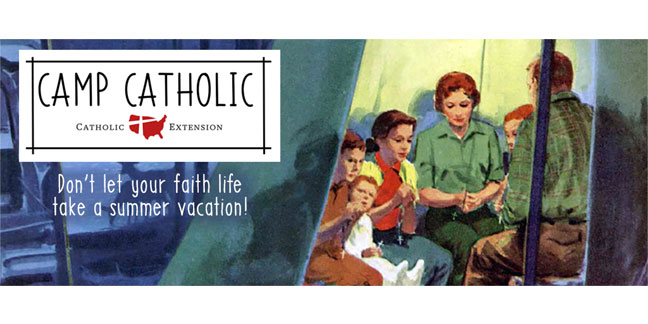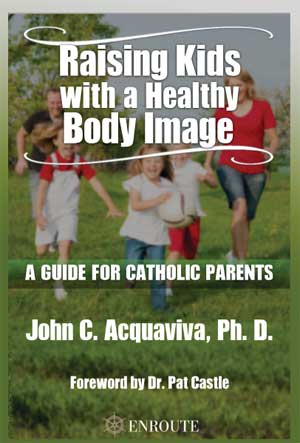 CHICAGO — Catholic Extension has launched its virtual Camp Catholic, an online summer camp for Catholics of all ages.
CHICAGO — Catholic Extension has launched its virtual Camp Catholic, an online summer camp for Catholics of all ages.
The virtual camp is designed to keep Catholics engaged in their faith during the lazy days of summer, “when most of us are enjoying vacations, splashing in the pool and celebrating the kid in all of us,” said a news release from the Chicago-based organization.
Camp Catholic offers campers weekly email messages that feature a Gospel passage paired with interactive content including activities and “Catholic Questions” that can be shared with friends, family parish and school – all delivered to participants’ inboxes after they sign up at www.catholicextension.org/join-camp-catholic-2017.
Catholic Extension is the leading supporter of missionary work in poor and remote parts of the United States.
Each week of the 12-week email series covers a different theme – from vocations to the sacraments to the saints. The messages contain Gospel reflections from seminarians who are supported by Catholic Extension as well as educational content offering catechesis and explanations behind Catholic teachings and traditions.
Each week, campers also can expect a “Weekly Challenge” encouraging them to share their faith with others and engage with Catholic Extension on social media.
“Featuring engaging infographics and fun activities, Camp Catholic is a perfect way to ensure that you don’t take a vacation from your faith this summer,” said the release.
Catholic Extension ran the series last summer and more than 3,000 people participated. To date, there are already more than 1,300 virtual campers connecting with their faith through Camp Catholic.
— Catholic News Service
Pictured: This is artwork for Catholic Extension’s Camp Catholic, an online summer camp for Catholics of all ages. Registered campers receive weekly email messages that feature a Gospel passage paired with interactive content including activities and “Catholic Questions” that can be shared with friends and family. Gospel reflections are from seminarians who are supported by Catholic Extension. (CNS | Catholic Extension)
 CHARLOTTE — Many young people today struggle with a poor body image, and a new book by a local author re-examines the problem using St. John Paul II’s Theology of the Body and other Church teaching.
CHARLOTTE — Many young people today struggle with a poor body image, and a new book by a local author re-examines the problem using St. John Paul II’s Theology of the Body and other Church teaching.
“Raising Kids with a Healthy Body Image: A Guide for Catholic Parents,” by Dr. John Acquaviva, an exercise science professor and St. Matthew Church member, aims to help young people develop a healthy body image.
“From a young age, our kids are under immense pressure from a variety of sources that can determine the value of their bodies,” explains Acquaviva. “But God has something to say about this as well. Pope John Paul II’s wonderful teaching known as Theology of the Body is the book’s guiding force, and along with Scripture and the Church’s sacraments, this book is an excellent parenting tool to guide your child so they see the worth of their bodies as designed by our Creator.
“In addition, this book discusses the numerous causes of a poor body image and includes chapters on how to instill fitness and sound nutrition into your family life,” he says.
Acquaviva, who holds a doctorate in exercise science, teaches courses including strength and conditioning, sports nutrition, exercise physiology, and weight loss, weight gain and body image at Wingate University. He also hosts “Faith & Fitness” on Radio Maria which airs on Mondays at 2 p.m. EST.Over the years, the Matthews resident has given hundreds of presentations to fitness professionals, church congregations, youth groups and campus ministries.
“After writing the first book, ‘Improving Your Body Image Through Catholic Teaching,’ I gave several presentations to churches, men’s and women’s groups, young adults, etc., to promote the book and its message,” Acquaviva says. “I often mentioned the follow-up book and discussed that its purpose was going to be a weapon for parents to combat the poor body image their young son or daughter may suffer from. Inevitably, they were more interested in the current book due to their age and position (many were parents).
Acquaviva says he purposely included the basics of Catholic teaching and sought to gently catechize the reader so they could pass it onto their children, besides all of the body image basics and statistics.
“I felt instinctively that Catholic readers would find it interesting as well as practical and helpful to their parenting responsibilities,” he says. “There are several books on body image and even ones that attempt to assist those with body image issues, but this book is the first attempt to heal poor body image through Scripture and the teachings of the Church.”
— SueAnn Howell, senior reporter
Order a copy
“Raising Kids with a Healthy Body Image: A Guide for Catholic Parents” by Dr. John Acquaviva, published by Enroute Books and Media, is available at www.enroutebooksandmedia.com and www.amazon.com.

